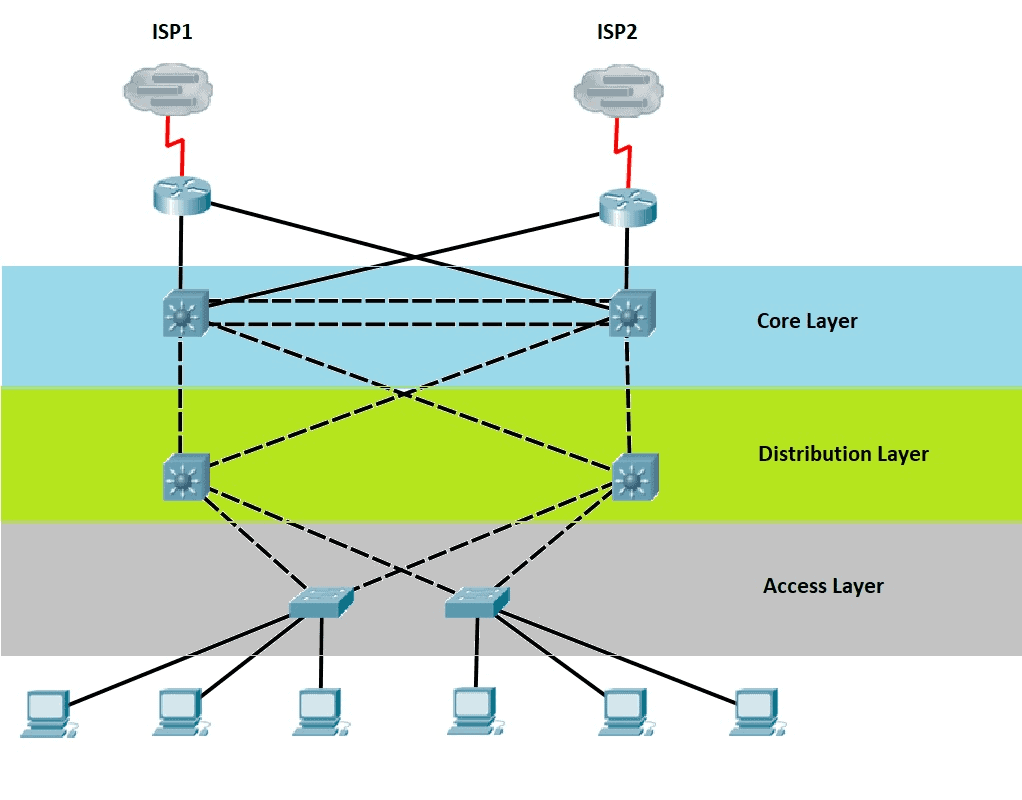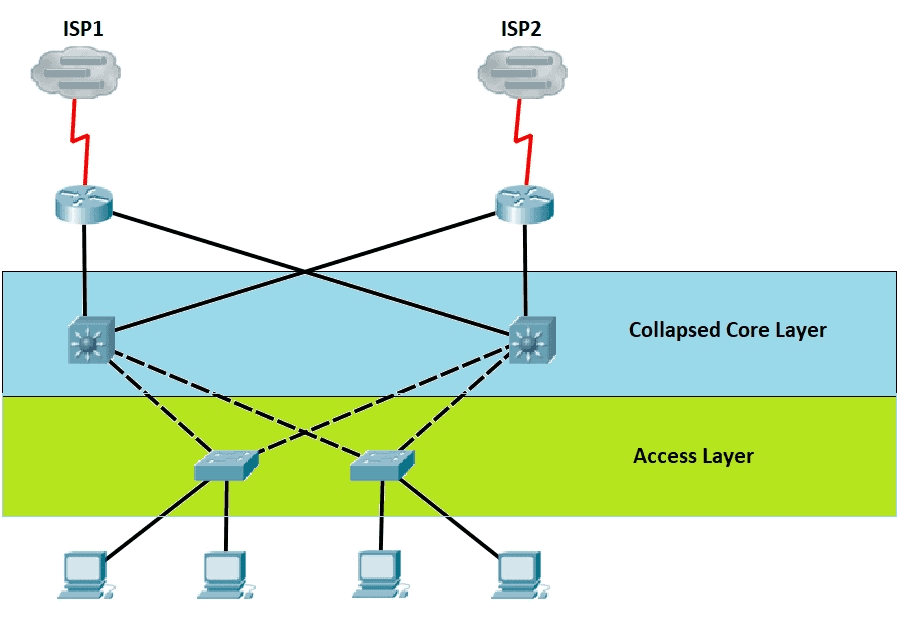Before we jump into the discussion of the similarities and differences between collapsed core and three-tier architectures, let’s first recap some of the key terminologies.
Campus Network – A computer network that is larger than a Local Area Network (LAN) but smaller than a Metropolitan Area Network (MAN). It usually connects buildings within a limited geographical area.
Core Layer – It serves as the backbone of the network and interconnects distribution switches. These devices should be high-speed and able to forward packets as quickly as possible.
Distribution Layer – Distribution switches aggregate traffic from the access layer switches before it is transmitted to the core layer. Routing, filtering, and QoS features are usually managed here.
Access Layer – Access switches connect end devices to the network. It could be anything from your computer, IP phone, printer, surveillance camera, etc.
Collapsed Core Architecture
Collapsed Core Architecture is a campus network design wherein we combine the core and distribution layers. We do not use a separate set of core switches in addition to the distribution switches. The core and distribution functions are implemented by a single device.
Core layers are responsible for forwarding large amounts of packets both reliably and quickly. The distribution layer, on the other hand, is routing and filtering, and the communication point between the access layer and the core. This design is often deployed in small and medium campus networks.
Benefits of Collapsed Core Architecture
Below are the advantages of using a collapsed core architecture:
Lower Costs – the company or organization can save money by reducing the number of hardware, including the running of copper or fiber to link these devices.
Simplified Network – configuring and managing these devices are less complex, with only two layers requiring communication.
Limitations of Collapsed Core Network Architecture
Using the collapsed core architecture also has its disadvantages, such as the following:
Less scalable – Fewer devices mean we’re also limiting scalability, especially in a rapidly growing network where we connect more and more end-users. By Cisco’s definition, a small network provides services for up to 200 devices while a medium-size network provides services for 200 to 1000 devices.
Resiliency – We said earlier that the core switch should be high-speed and able to forward packets as quickly as possible. But in a collapsed core design, the collapsed core switches are also performing other functions of the distribution switch, which results in higher utilization. This can lead to degraded services.
Redundancy – With fewer devices needed to run the network, there is a lower redundancy to cover the failures of individual components.
Collapsed Core and Three-Tier Architectures Comparison
Below is an overview of the differences between the collapsed core and the three-tier network architectures:
| Collapsed Core | Three-tier |
| 2 layers | 3 layers |
| Core and Distribution functions combined | Core and Distribution layers are separate functions |
| Small and medium-sized networks | Large campus networks |
| Less cost | More expensive |
| Lacks redundancy | More fault tolerance |
| Less resiliency | More resilient |
| Simplified design | More complex design and requires more technical skills to maintain |
Download our Free CCNA Study Guide PDF for complete notes on all the CCNA 200-301 exam topics in one book.
We recommend the Cisco CCNA Gold Bootcamp as your main CCNA training course. It’s the highest rated Cisco course online with an average rating of 4.8 from over 30,000 public reviews and is the gold standard in CCNA training:


